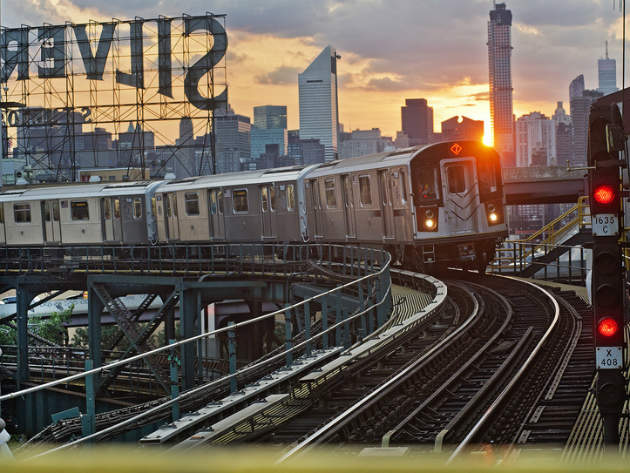
New York currently hosts the world’s largest and busiest network, which is also the most problematic. Plagued by unreliable trains, frequent rush hour failures and chronic overcrowding, its very safety came under scrutiny recently after a train derailed and crashed into a mid-tunnel wall in Manhattan, leaving 34 injured.
The daily ridership on the city’s subway sky-rocketed from four million passengers in the 1990s to six million today, a figure the system was not equipped to handle. Improvements carried out over the years have done little to increase capacity and reliability.
In June, Governor Andrew Cuomo signed an executive order declaring a state of emergency on the subway, expediting improvements needed to fix the “deplorable” service and pledging an extra $1bn towards the repairs.
“We know the system is decaying and we know the system is decaying rapidly,” Cuomo said in his speech. “Just three days ago we literally had a train come off the tracks. It’s the perfect metaphor for the dysfunction of the entire system.”
The Metropolitan Transit Authority (MTA), the corporation responsible for public transportation in the state of New York, has been aware of the outpour of complaints, and at the beginning of this year, announced plans for a holistic approach that will target some of the most pressing problems.
An emergency intervention
With an operating budget of $15bn a year, the MTA serves New York City’s five boroughs and the seven surrounding suburban communities.
The service struggles for many reasons, including daily overcrowding, a signal system in desperate need of replacement, an outdated communications system to inform riders of operating conditions, a power grid that often fails, and ageing infrastructure with more than 700 cars having surpassed their 40-year expiration date.
“The delays are maddening New Yorkers,” Cuomo said. “They’re infuriated by a lack of communication, unreliability, and now accidents.”
Aside from the extra $1bn in funding, Cuomo also asked MTA Chairman Joe Lhota to produce a reorganisation plan for the MTA in 30 days, starting with “a blank piece of paper” in a shake-up that holds “no givens, no sacred cows”. However, since then, Lhota has come under criticism for suggesting that commuters should travel “earlier or later” to avoid the crippling delays.
Cuomo also ordered a 60-day review of the subway cars, the physical equipment and the MTA Capital Plan, which has $14.5bn put aside for subway improvements.
The announcement came just over a month after MTA launched its six-point strategy, a “comprehensive and focused plan targeting short-term, achievable service improvements”.
Launched on 15 May, the plan promises to reorganise the MTA management structure, separating the chairman and CEO positions, and mitigate delays caused by a slow response to sick passengers by employing more emergency service technicians at five of its busiest stations.
The organisation’s approach to streamlining passenger boarding and behaviour recently failed to impress users. Riders complained about seemingly ‘pointless’ neon-yellow directional mats placed on the floor of each carriage, with arrows prompting passengers to move down inside the cars when boarding.
“Genius Challenge” pools new resources
The MTA has also reached out outside of its organisation for bright ideas of how to solve some of the biggest problems.
In May, the MTA Genius Transit Challenge was launched, calling on individuals, businesses, non-profits and institutions of higher education to bring forward proposals under three specific areas: improving the signal system, getting better subway cars, and increasing communications connectivity. The winner of each challenge, to be announced in December 2017, will be awarded $1m to put their plan into action.
For the first challenge, participants are tasked with either accelerating the delivery of the communications-based train control (CBTC), a system which would reduce the space in between cars and allow trains to be stopped automatically, or identifying an alternate, cheap signalling technology solution that could be deployed much faster. At present, the capital plan has almost $3bn reserved for improving signals and communications, as well as more than $1bn for the CBTC installation.
The second challenge addresses the time it takes to build a subway car, which is generally three years. With deadlines for new fleets later this year and early next, the MTA is looking for ways of deploying modern cars across the system even sooner. One important feature of these new designs will be the subway car doors, which open and close roughly seven million times daily, and are at the root of most car-related failures.
Lastly, the MTA is looking for ways to deploy modern train communications and control technologies, particularly inside the narrow tunnels which struggle to run cables and communications infrastructure inside.
“If we are to meet the modern needs of today’s and tomorrow’s New Yorkers and keep the region competitive for decades to come, we must bring our subway system into the 21st century,” the MTA said in a statement, adding, “We are calling on the greatest minds from around the world to deliver the next generation of mass transit to New York.”



